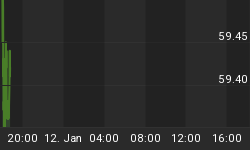In every bubble there are trends so obviously crazy that it's hard to see how anyone, let alone mainstream money managers, can buy in. And yet buy in they do.
This time around there are almost too many such trends to count. But perhaps the most obvious is corporate share repurchases. Though already a well-known and much lamented practice, it has yet to send hot money running for the exits or spawn a regulatory backlash. But it has generated some good analysis from mainstream news organizations, which might be a sign that we're near the end. Consider this from Reuters:
The Cannibalized Company: As stock buybacks reach historic levels, signs that corporate America is undermining itself
When Carly Fiorina started at Hewlett-Packard Co in July 1999, one of her first acts as chief executive officer was to start buying back the company's shares. By the time she was ousted in 2005, HP had snapped up $14 billion of its stock, more than its $12 billion in profits during that time.Her successor, Mark Hurd, spent even more on buybacks during his five years in charge - $43 billion, compared to profits of $36 billion. Following him, Leo Apotheker bought back $10 billion in shares before his 11-month tenure ended in 2011.
The three CEOs, over the span of a dozen years, followed a strategy that has become the norm for many big companies during the past two decades: large stock buybacks to make use of cash, coupled with acquisitions to lift revenue.
All those buybacks put lots of money in the hands of shareholders. How well they served HP in the long term isn't clear. HP hasn't had a blockbuster product in years. It has been slow to make a mark in more profitable software and services businesses. In its core businesses, revenue and margins have been contracting.
HP's troubles reflect rapid shifts in the global marketplace that pressure most large companies. But six years into the current expansion, a growing chorus of critics argues that the ability of HP and companies like it to respond to those shifts is being hindered by billions of dollars in buybacks. These financial maneuvers, they argue, cannibalize innovation, slow growth, worsen income inequality and harm U.S. competitiveness.
A Reuters analysis shows that many companies are barreling down the same road, spending on share repurchases at a far faster pace than they are investing in long-term growth through research and development and other forms of capital spending.
Almost 60 percent of the 3,297 publicly traded non-financial U.S. companies Reuters examined have bought back their shares since 2010. In fiscal 2014, spending on buybacks and dividends surpassed the companies' combined net income for the first time outside of a recessionary period, and continued to climb for the 613 companies that have already reported for fiscal 2015.
In the most recent reporting year, share purchases reached a record $520 billion. Throw in the most recent year's $365 billion in dividends, and the total amount returned to shareholders reaches $885 billion, more than the companies' combined net income of $847 billion.
The analysis shows that spending on buybacks and dividends has surged relative to investment in the business. Among the 1,900 companies that have repurchased their shares since 2010, buybacks and dividends amounted to 113 percent of their capital spending, compared with 60 percent in 2000 and 38 percent in 1990.
And among the approximately 1,000 firms that buy back shares and report R&D spending, the proportion of net income spent on innovation has averaged less than 50 percent since 2009, increasing to 56 percent only in the most recent year as net income fell. It had been over 60 percent during the 1990s.
Share repurchases are part of what economists describe as the increasing "financialization" of the U.S. corporate sector, whereby investment in financial instruments increasingly crowds out other types of investment.
The phenomenon is the result of several converging forces: pressure from activist shareholders; executive compensation programs that tie pay to per-share earnings and share prices that buybacks can boost; increased global competition; and fear of making long-term bets on products and services that may not pay off.
It now pervades the thinking in the executive suites of some of the most legendary U.S. innovators.
IBM Corp has spent $125 billion on buybacks since 2005, and $32 billion on dividends, more than its $111 billion in capital spending and R&D during the same period. Pharmaceuticals maker Pfizer Inc spent $139 billion on buybacks and dividends in the past decade, compared to $82 billion on R&D and $18 billion in capital spending. 3M Co, creator of the Post-it Note and Scotch Tape, spent $48 billion on buybacks and dividends, compared to $16 billion on R&D and $14 billion in capital spending.
At Thomson Reuters Corp, owner of Reuters News, capital spending last year totaled $968 million, more than half of which went toward R&D, according to the company's annual report. Buybacks and dividends for the year were more than double that figure, at a combined $2.05 billion. The company had 53,000 full-time employees last year, down from 60,500 in 2011. So far this year, capital spending is at $743 million, while buybacks and dividends total $2.02 billion.
Read the rest of the study here.
In effect, these companies have become hedge funds, taking in cash and betting it on movements in share prices. But because the portfolio managers (i.e., the CEO and CFO) are paid according to the shortest of short-term metrics -- year-end share price and dividend yield -- they couldn't care less about the kind of company they're leaving to their successors a decade hence.
That pretty much sums up the "financialization" trend in business management (and government and personal finance). And it virtually guarantees a bad outcome at some point in the not too distant future.
















